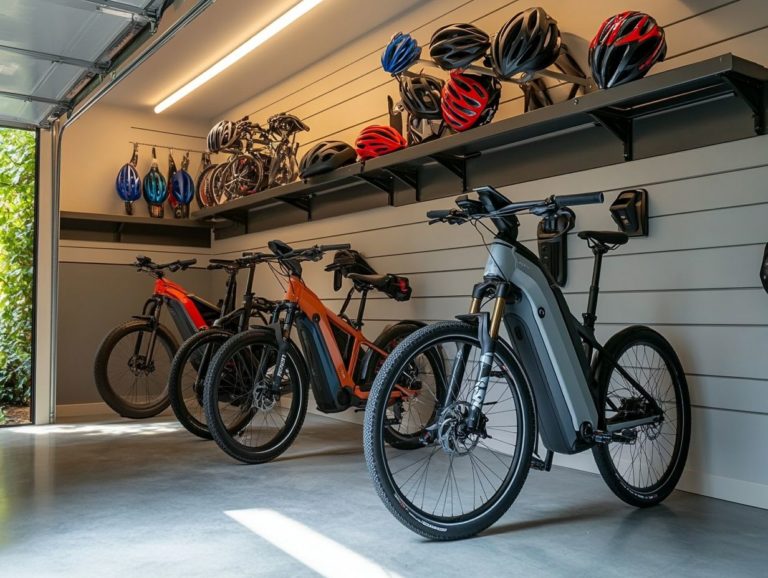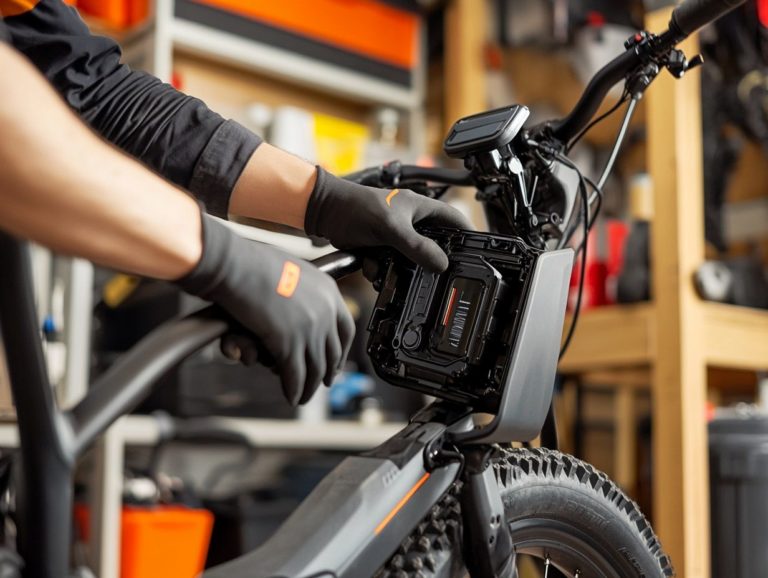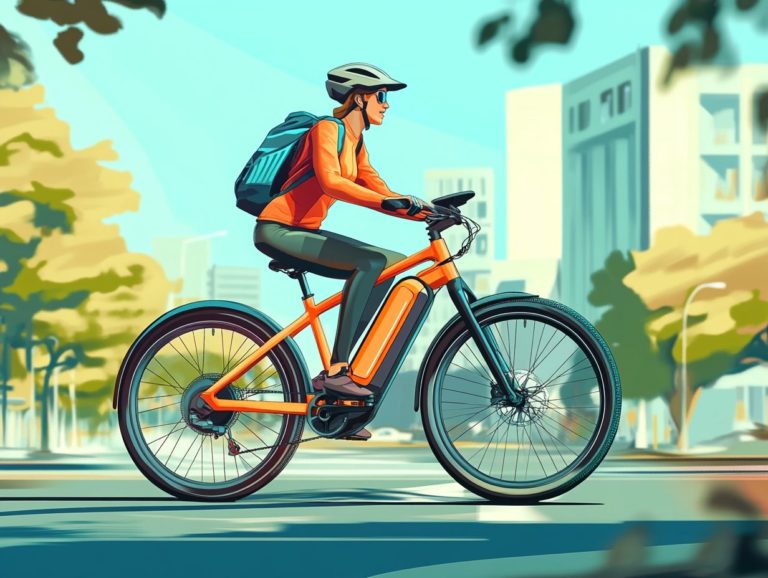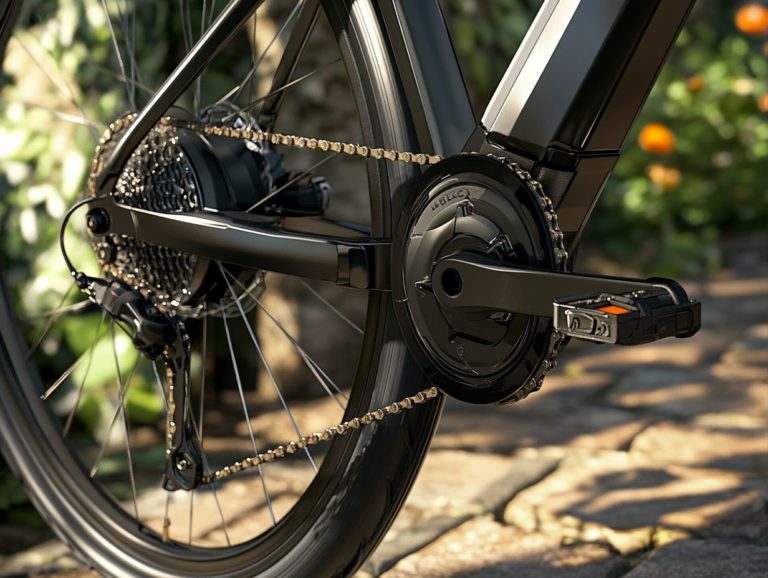Can You Convert a Regular Bicycle to Electric?
Curious about transforming your regular bicycle into an electric bike?
Electric bike conversions, like the Swytch kit and Bafang kit, are gaining traction, offering you a blend of convenience, cost savings, and environmental benefits.
This guide is your comprehensive resource, covering everything you need to know from the various types of conversion kits to consider, such as hub motors versus mid-drive motors, to essential factors like compatibility issues and your mechanical competence.
You ll find a detailed installation process and maintenance tips to ensure your new ride runs smoothly for years to come.
Get ready for an exciting journey into the world of e-bike conversion!
Contents
- Key Takeaways:
- Benefits of Converting a Regular Bicycle to Electric
- Cost Savings and Environmental Impact
- Types of Electric Bike Conversions
- Factors to Consider Before Converting
- Step-by-Step Guide to Converting a Regular Bicycle to Electric
- Table of Contents
- Maintenance and Troubleshooting Tips
- Frequently Asked Questions
- Can You Convert a Regular Bicycle to Electric Using a conversion kit?
- What are the benefits of converting a regular bicycle to electric?
- Do I need any special tools or skills to convert my bicycle to electric?
- Is it cost-effective to convert a regular bicycle to electric?
- Can I switch back to a regular bicycle after converting it to electric?
- Are there any downsides to converting a regular bicycle to electric?
Key Takeaways:
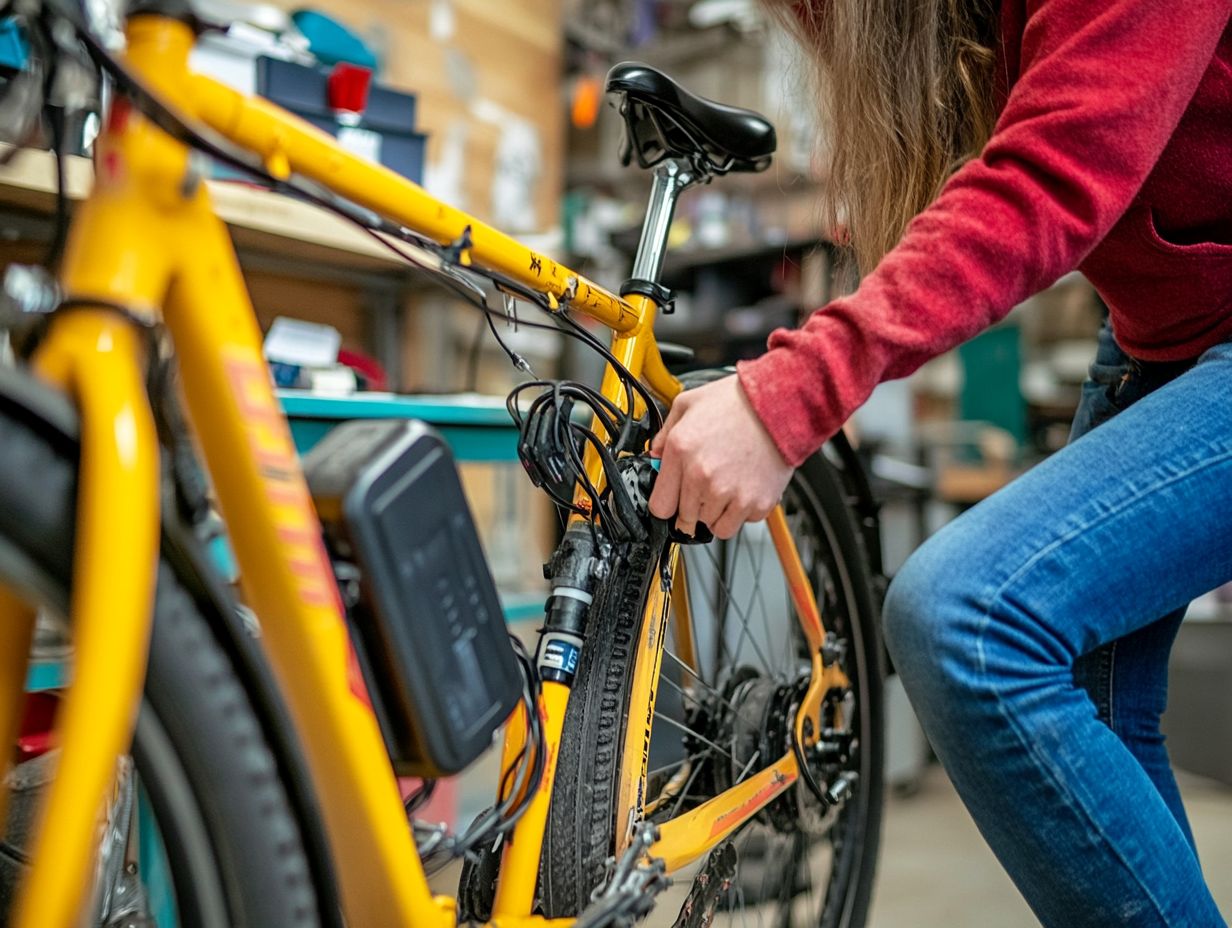
- Converting a regular bicycle to electric, using kits like the Rubbee X, offers several benefits, such as cost savings and reducing environmental impact.
- There are two types of electric bike conversions: hub motor and mid-drive kits. It’s important to consider compatibility and your skill level before choosing one.
- To successfully convert your bike, you will need specific materials and tools and a step-by-step installation process to follow.
- Regular maintenance and troubleshooting tips are essential to keep your electric bike running smoothly. Proper care and attention can extend the lifespan of your conversion.
What is an Electric Bike Conversion?
An electric bike conversion is your gateway to transforming a standard bicycle into an electric bike, utilizing various conversion kits like the Swytch kit or Bafang kit. These enhancements elevate your riding experience with electric assistance, perfect for cycling enthusiasts eager for eco-friendly transportation options.
The kits typically include crucial components such as a mid-drive motor, a compatible battery, and installation tools designed for different bicycle frames. This makes it easy for both experienced bike mechanics and casual riders to achieve a straightforward conversion tailored to their commuting needs. If you’re wondering can you customize your electric bicycle, these kits offer great flexibility.
With a plethora of e-bike conversion options, you can select between hub motor kits and mid-drive kits depending on your unique riding style. Hub motor kits, placed in either the front or rear wheel, deliver a smooth boost to speed and stability.
Meanwhile, mid-drive kits, such as those from TongSheng, provide enhanced torque and a more natural feel, making them perfect for conquering inclines with ease.
The batteries available come in various capacities and ranges, accommodating everything from longer commutes to quick day trips, allowing you to ride farther with less fatigue. Converting your bike makes cycling more enjoyable and accessible while helping the planet.
Benefits of Converting a Regular Bicycle to Electric
Converting a regular bicycle into an electric bike offers a wealth of advantages that address both financial and environmental considerations, making it an enticing choice for commuters and cycling enthusiasts alike.
By utilizing electric bike conversion kits, you can reap substantial savings on fuel, parking, and maintenance costs, all while minimizing your carbon footprint. This eco-friendly transportation alternative promotes sustainable living and enhances your cycling experience.
Act now to transform your ride!
Cost Savings and Environmental Impact
Switching to an electric bike can lead to remarkable cost savings. By avoiding expenses tied to gas, insurance, and vehicle maintenance, you re not just finding a more budget-friendly commuting option; you re also making a positive impact on the environment.
Electric bikes reduce your reliance on fossil fuels, helping to lower carbon emissions and offering an eco-friendly transportation solution for urban residents. In fact, studies show that e-bike riders can save over $1,200 annually when considering the elimination of fuel costs and vehicle upkeep.
Switching to an e-bike not only lightens your financial load but also sparks joy in sustainable commuting! For instance, one e-bike can offset nearly 1,500 pounds of CO2 emissions each year equivalent to planting over 60 trees.
By opting for an electric bicycle, you re not only boosting your financial health but also playing a crucial role in creating a sustainable, cleaner environment for generations to come.
Types of Electric Bike Conversions
Electric bike conversion, which is the process of adding electric assist to a traditional bike, comes in various forms, primarily categorized by the motor systems employed. Below are popular conversion kits:
- Swytch kit: Remarkable convenience.
- Bafang kit: Celebrated for its high torque capabilities.
- Voilamart s rear hub motor: An affordable entry into the world of e-assistance in cycling.
Hub Motor vs. Mid-Drive Conversion Kits
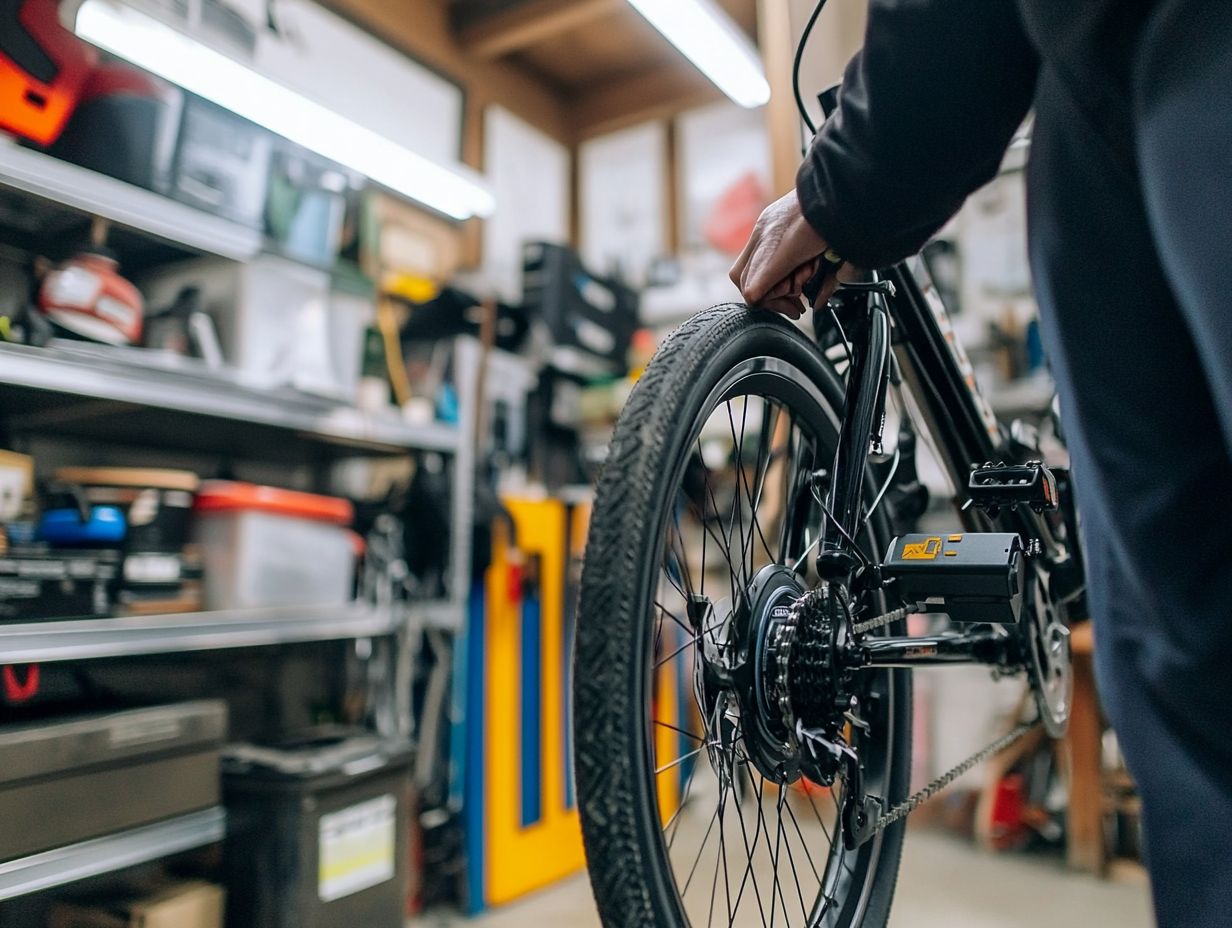
When weighing the options between hub motor and mid-drive conversion kits, carefully consider factors like power output, torque sensor functionality, and the overall riding quality to find the system that best fits your cycling style and needs.
Hub motors, typically installed in the wheel, offer a straightforward installation process and often come at a more budget-friendly price point. In contrast, mid-drive motors provide superior weight distribution and torque, enhancing performance across varied terrains, making them the go-to choice for dedicated cyclists.
Each motor type presents unique characteristics, including pedal assistance features, that can greatly influence your cycling experience. While hub motors excel in simplicity and require minimal maintenance, they might not deliver the responsiveness needed for steep climbs or challenging conditions areas where mid-drive motors truly shine, thanks to their efficient use of gears.
The placement of mid-drive systems enhances balance, contributing to better handling on turns and uneven surfaces. However, it’s worth noting that mid-drive motors may lead to increased wear on chain components, necessitating more frequent maintenance.
Ultimately, grasping these differences gives you the power to select a setup that complements your riding habits and elevates your experience on the road or trail.
Factors to Consider Before Converting
Before you embark on your electric bike conversion, it s essential to weigh several factors. Consider potential compatibility issues between your chosen kit and your specific bicycle model.
Assess your own mechanical skills and skill level with bike mechanics this will guide your approach. Understanding battery compatibility is crucial and can save you from costly missteps, ensuring a seamless conversion experience that enhances the riding quality of your newly electrified bike.
Don t miss out on the chance to save money while saving the planet! Start your electric bike journey today! Explore our conversion kits and ride into a greener future!
Compatibility and Skill Level
Assessing compatibility and skill level is crucial when considering an electric bike conversion. Different bike frames, materials, and components can present challenges that demand a certain degree of basic bike repair skills. You need to ensure that the conversion kit you choose aligns perfectly with your bicycle’s specifications to avoid frustrating compatibility issues. Be prepared for the installation process it may require knowing a few bike repair tricks!
Common compatibility issues can arise from mismatched wheel sizes, brake types, or incompatible drivetrains. For example, an electric conversion kit designed for mountain bikes might not mesh well with a road bike because of differences in frame geometry.
It’s essential to take an honest look at your mechanical skills. If you re comfortable with tools and have experience assembling bikes, you re in a better position to tackle the installation. However, if you re feeling unsure, it might be wise to consult a professional or choose kits that come with detailed, step-by-step guides.
Ultimately, choosing the right conversion kit means weighing both your bike s characteristics and your own technical expertise. Get ready to ride into the future!
Step-by-Step Guide to Converting a Regular Bicycle to Electric
Transforming your regular bicycle into an electric bike is a rewarding endeavor that requires a systematic installation process. By using specific materials and tools essential for a successful e-bike conversion, you can seamlessly integrate electric assistance into your daily cycling routine.
This comprehensive guide will walk you through the necessary steps, from gathering all required materials to completing the installation process, ensuring that you enjoy an efficient and effective e-assistance experience. Let s get started!
Materials and Tools Needed
To successfully transform a bicycle into an amazing electric bike, you ll need a selection of materials and tools. This includes a suitable electric motor, a quality battery, and conversion kits designed for your specific bike model. Don t underestimate the importance of gathering the right components; compatibility is key to maximizing your e-bike’s efficiency and ensuring the installation steps are straightforward.
When selecting an electric motor, consider both the power rating and type. Hub motors, which are located in the wheel hub, are generally favored by DIY enthusiasts for their simplicity. On the other hand, mid-drive motors, which are mounted in the bike’s frame, deliver superior performance across varied terrains.
For the battery, choose one that aligns with your motor s voltage and capacity specifications. A 36 volt or 48 volt battery size is typically suitable, and high-quality lithium-ion batteries are often recommended due to their exceptional longevity.
A dependable conversion kit, like the Swytch kit, can also be a game changer, saving you time and effort since it typically comes with all the necessary connectors and mounts specific to your bike model. If you’re considering enhancements, you might wonder, can I upgrade my electric bicycle?
Lastly, ensure you have basic tools like wrenches, screwdrivers, and a torque wrench on hand for the installation process. Familiarizing yourself with the bike’s frame material and wiring will also pave the way for a smooth and successful bike conversion. Get ready to enjoy the thrill of electric cycling!
Table of Contents
Installation Process

Converting a standard bicycle into an electric bike involves several key steps that require your attention. Start by preparing the bike frame, securing the electric motor, and ensuring the electrical connections are spot on. Follow the instructions in your conversion kit s manual for the best results.
Gather all the necessary tools and components before diving into the installation process. You ll need the electric motor, battery, controller, and wiring harness. Don t forget anything!
Safety is paramount. Slipping on a pair of gloves and goggles will help shield you from potential injuries during the installation steps.
When installing the motor, ensure it s securely fastened to avoid any wobbling during your rides. As you connect the wiring, double-check that each connection is tight and properly aligned to prevent shorts or malfunctioning.
Be mindful of common pitfalls. Over-tightening bolts can cause damage, and neglecting to check the battery placement can affect weight distribution.
By following these best practices, including considering pedal assistance options, you ll ensure a smooth and efficient e-bike conversion process. Get ready to ride!
Maintenance and Troubleshooting Tips
Regular maintenance is vital for keeping your electric bike in top-notch condition. By engaging in proactive care and familiarizing yourself with common issues, you can ensure reliable performance.
This approach enhances your riding pleasure and provides the peace of mind that comes from knowing customer support is readily available for compatibility issues.
To keep your electric bike performing at its best, focus on key areas like checking the battery size, ensuring the torque sensor (which helps measure and adjust the power output) is functioning correctly, and monitoring overall performance. Establishing a consistent maintenance routine allows you to spot potential issues before they escalate.
Pay special attention to battery care. Regularly inspect and keep your battery charged between 20% and 80% to extend its lifespan. Examine motor components for unusual sounds or malfunctions that might signal wear and tear.
Simple tasks like cleaning the chain, adjusting the brakes, and checking tire pressure elevate performance and safety. Follow these maintenance guidelines to enjoy an improved riding experience while extending the life of your cherished machine.
Frequently Asked Questions
Can You Convert a Regular Bicycle to Electric Using a conversion kit?
Yes, it’s possible! You can convert a regular bicycle to electric using kits like the Swytch or Bafang kit. There are various options available in the market to electrify your bike.
What are the benefits of converting a regular bicycle to electric?
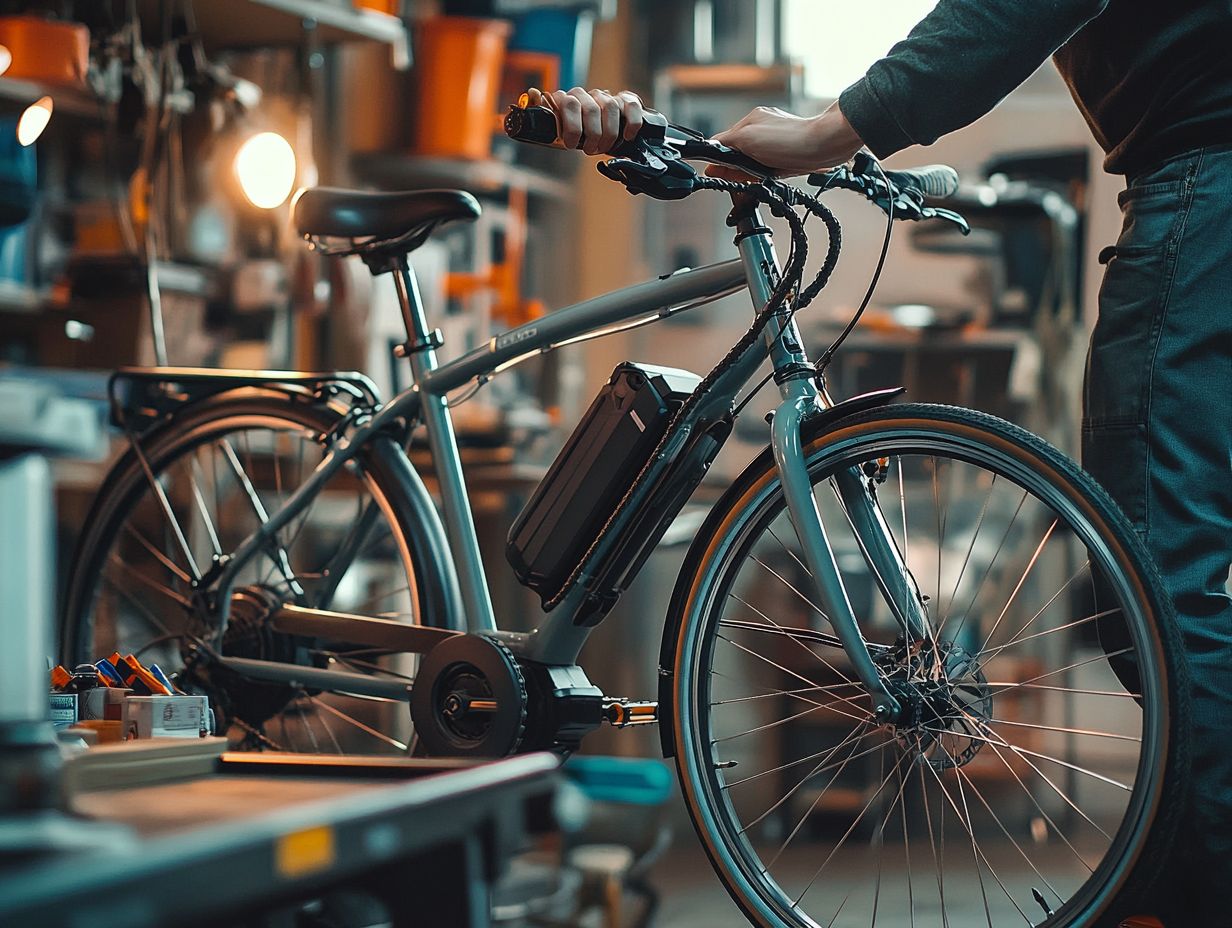
Converting a regular bicycle to electric offers several benefits such as increased speed and range, reduced effort while pedaling, and the ability to tackle hilly terrains with ease, especially with the right torque sensor.
Do I need any special tools or skills to convert my bicycle to electric?
You don’t need special skills to convert your bicycle to electric! Most conversion kits come with all the necessary tools and instructions. However, basic bike mechanics knowledge can help!
Is it cost-effective to convert a regular bicycle to electric?
Converting a regular bicycle to electric can be cheaper than buying a new electric bike! Plus, you keep your favorite bike’s frame and components.
Can I switch back to a regular bicycle after converting it to electric?
Yes! Most kits are removable, so you can easily switch back to a regular bike whenever you want. You can also adjust or turn off the assistance feature!
Are there any downsides to converting a regular bicycle to electric?
One downside is the extra weight from the battery and motor, which may affect handling. Additionally, the initial cost of the kit may be a concern for some.

